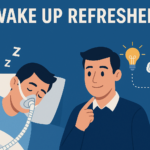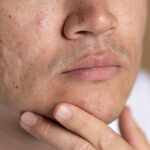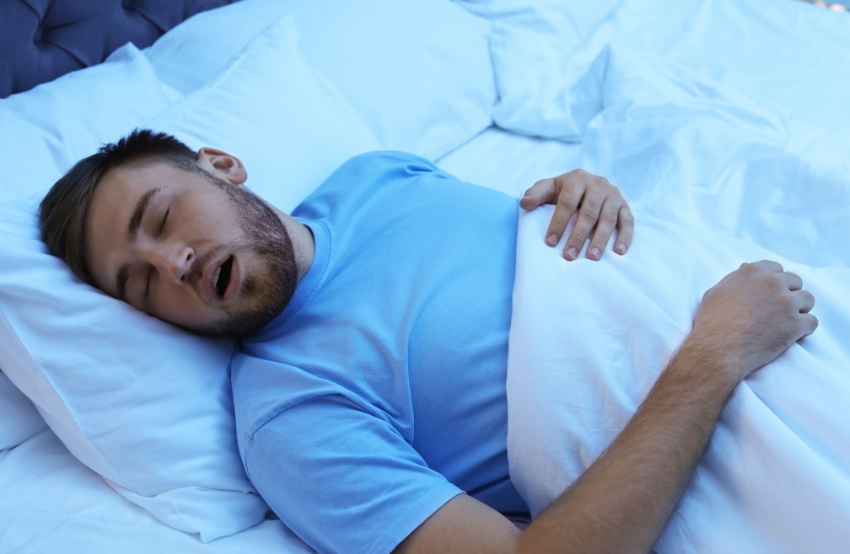Sleep apnea, a perplexing sleep disorder, manifests as a tumultuous symphony of breath, alternating between cessation and resurgence while one succumbs to the nocturnal embrace of slumber. At the heart of this enigma lies the most prevalent variant known as obstructive sleep apnea (OSA), a relentless adversary that assails the tranquillity of rest. The urgency of addressing sleep apnea cannot be overstated, for its disruptive presence in the realm of sleep can cast a looming shadow over one’s overall health, paving the ominous path toward more severe afflictions.
The Varied Facets of Sleep Apnea
- Obstructive Sleep Apnea (OSA):
– The most ubiquitous form of sleep apnea, OSA, lays claim to approximately 84% of reported cases.
– Its genesis lies in the overzealous relaxation of the muscles positioned at the rear of the throat during slumber, culminating in the narrowing or complete blockage of the airway.
– This perturbing phenomenon leads to recurrent respiratory interruptions, punctuated by episodes of shallow or even suspended breathing.
– OSA manifests itself through overt manifestations, including raucous snoring, abrupt nocturnal awakenings provoked by choking or gasping for breath, and the notorious daytime drowsiness that ensues.
- Central Sleep Apnea (CSA):
– In contrast to OSA, CSA, though less common, thrusts the brain into the spotlight. Here, the brain grapples with a debilitating failure to dispatch the appropriate signals to the muscular sentinels tasked with regulating respiration.
– CSA shuns the physical barricades of OSA and delves into the intricate realm of neurological impairment.
– Sufferers of CSA endure the silent turmoil of disrupted breathing, often devoid of the cacophonous serenades of snoring. They are instead haunted by the incessant nocturnal awakenings and the ceaseless companion of daytime lethargy.
- Complex Sleep Apnea Syndrome
(Treatment-Emergent Central Sleep Apnea):
– The chronicle of complex sleep apnea, also christened treatment-emergent central sleep apnea (TE-CSA), unfolds as a tapestry woven from the threads of both OSA and CSA.
– Its narrative typically commences as OSA, only to metamorphose into CSA during OSA management with the aid of continuous positive airway pressure (CPAP) therapy.
– TE-CSA demands a distinct therapeutic strategy, one that deftly navigates the coalescence of obstructive and central elements.
The Maze of Common Causes
To truly grasp the essence of sleep apnea, one must navigate the labyrinthine pathways of its common causes:
- Obesity
Foremost among the culprits is obesity, casting a long shadow over the sleep apnea landscape. It places excess body weight, particularly in the vicinity of the neck and throat, at the epicenter of risk. This corporeal burden, manifested as fat deposits, serves as the architect of airway constriction, paving the way for collapse during sleep’s embrace.
- Genetics
The specter of heredity also looms large, as family lineage often plays a pivotal role in sleep apnea’s genesis. It whispers of genetic predispositions, hinting at the intricate interplay of hereditary factors that may sculpt anatomical features predisposing individuals to airway obstructions.
- Age
The inexorable march of time brings with it a higher likelihood of succumbing to sleep apnea. Age-related factors, such as the inexorable erosion of throat muscle tone and structural alterations to the airway, conspire to elevate risk.
- Gender
Gender too holds sway, with men bearing a heavier burden than women, although the scales tip for women who carry the extra weight of obesity or a familial connection to this enigmatic condition. Hormonal dynamics, especially during menopause, also add their strokes to the intricate canvas.
- Alcohol and Sedative Use
The libations of alcohol, the soothing embrace of sedatives, and the temptations of muscle relaxants all contribute to the grand tapestry of sleep apnea. They orchestrate a symphony of muscle relaxation that invites the collapse of the airway during the tranquil realm of sleep.
- Smoking
Smoking, with its fiery tendrils, fuels inflammation and prompts fluid retention within the upper airway. A history of smoking paints a path fraught with increased susceptibility to the clutches of sleep apnea.
- Nasal Congestion and Allergies
The sinusoidal domains of allergies, chronic nasal congestion, or the capricious twists of a deviated septum create a stage where nasal passages transform into narrow corridors. Forced to breathe through their mouths, individuals traverse the treacherous terrain of heightened susceptibility to sleep apnea.
- Medical Conditions
The pantheon of sleep apnea’s common causes encompasses chronic maladies, with hypertension, diabetes, and heart failure taking center stage. Hormonal disorders, like enigmatic polycystic ovarian syndrome (PCOS), also merit a place in this intricate narrative.
How to Take Modalert for Sleep Disorders
Modalert is a medication used to treat sleep disorders like narcolepsy, obstructive sleep apnea (OSA), and shift work sleep disorder (SWSD).This is an easy how-to tutorial for taking it.
- Talk to Your Doctor
Before starting Modalert, make sure to consult with your doctor.
Follow the dosage they prescribe exactly.
- Dosage and Timing
For Narcolepsy and OSA: Usually, take 200 mg once in the morning.
For Shift Work Sleep Disorder: Take 200 mg about an hour before your work shift starts.
Your doctor might change the dose based on how you respond to it.
- How to Take It
Swallow the tablet with water.
You can take it with or without food, but try to take it at the same time every day.
- Avoid Certain Substances
Don’t drink alcohol while taking Modalert, as it can make side effects worse.
Limit caffeine (like coffee or soda) to avoid feeling extra nervous or having trouble sleeping.
- Watch for Side Effects
Common side effects include headache, nausea, feeling nervous, dizziness, and trouble sleeping.
If you experience serious side effects like chest pain or severe anxiety, call your doctor right away.
- Healthy Habits
Keep a regular sleep schedule and create a comfortable sleep environment.
Modalert works best as part of an overall plan that includes healthy lifestyle choices.
- Regular Check-ups
See your doctor frequently to make sure the drug is doing its job.
Share any concerns or side effects you’re experiencing.
- Don’t Share Your Medication
Modalert is meant for you and should not be shared with others.
Keep it securely out of children’s reach.
Remember: Modalert helps manage symptoms but isn’t a cure for sleep disorders. Use it exactly as prescribed and stay in touch with your doctor for the best results.
Risk Factors: The Ominous Overtones
Intertwined with the common causes are the ominous overtones of risk factors that amplify the specter of sleep apnea:
- Neck Circumference: A larger neck circumference, echoing with the presence of excess fat tissue around the neck, forges the pathway to heightened risk. It marks the bull’s eye of OSA’s dart.
- Family History: The whispers of familial connections insinuate a genetic inheritance, an ominous harbinger of potential susceptibility to the grasp of sleep apnea.
- Medical Conditions: Chronic conditions, including hypothyroidism and acromegaly, are inextricably entwined with sleep apnea’s story, etching their presence on the narrative’s parchment.
- Gender and Age: The cast of characters includes gender and age, with men shouldering a heavier burden, while the weight of risk in women is dictated by obesity and the dance of hormones through the stages of life.
- Lifestyle Factors: The pages of this narrative bear witness to the footprints of sedentary lifestyles, the stain of poor dietary choices, and the shadow of excessive alcohol or drug use. These factors, co-conspirators in weight gain and muscle relaxation, amplify the clarion call of sleep apnea.
- Ethnicity: The diverse tapestry of humanity unveils disparities among ethnic groups, with African Americans, Hispanics, and Pacific Islanders exhibiting a higher prevalence of sleep apnea.
Conclusion
Sleep apnea, a labyrinthine sleep disorder, casts a profound shadow over the realms of health and well-being. To navigate its intricate corridors successfully, one must decipher the different types, grasp the underlying causes, and fathom the labyrinthine risk factors that define its landscape. Early intervention, crafted through personalized treatment plans that encompass lifestyle modifications, therapeutic interventions, or surgical strategies, can profoundly enhance the quality of life for those ensnared by its enigmatic grasp. The journey begins with recognition and evaluation, a clarion call to seek consultation from healthcare professionals, illuminating the path to a restful slumber once more.







